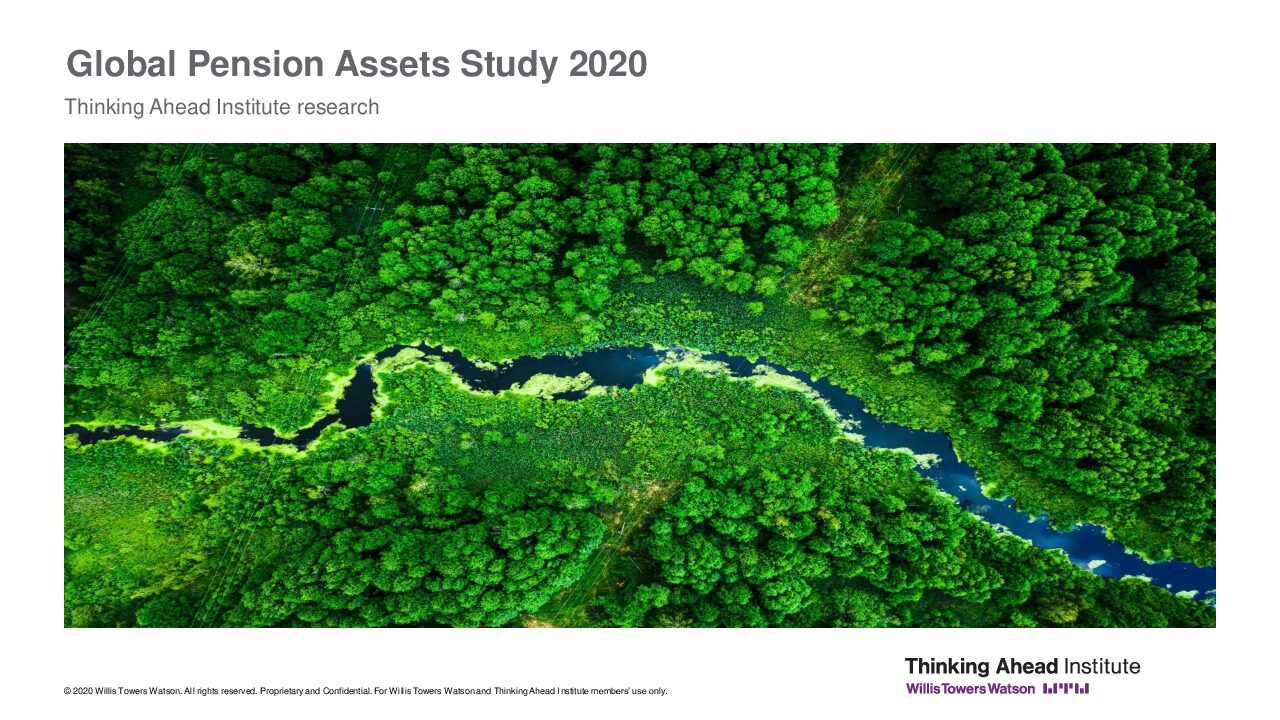The Global Pension Assets Study covers 22 major pension markets (the P22), which now totals US$46,734 billion in pension assets and account for 62% of the GDP of these economies. The study includes an analysis of the seven largest markets (the P7) which includes Australia, Canada, Japan, Netherlands, Switzerland, UK and US and comprises 92% of total pension assets.
Key findings
1. Good growth year for pension assets buoyed by significant gains in the global equity market
- Assets in the 22 largest pensions markets (P22) increased by 15% over the year, with Mexico, Canada and the US leading the way in terms of growth (22.2%, 18.9% and 17.8% respectively), reflecting strong gains in equity markets over the year. This represents a swing in fortunes from 2018, which was the third worst year for the top 7 pensions markets (P7)
- We continue to see a rise in allocations to private markets and other alternatives (23%, +17 percentage points since 1999) at the expense of equities and bonds, reflecting the demand for risk diversification. Investors continue to look for innovative ways to evolve their mandates to better manage the agency, measurement, integration and complexity challenges involved with private markets.
2. DC is settling in as the dominant global model but faces challenges
- Last year, total Defined Contribution (DC) assets across the aggregate of the six largest pension markets in the world exceeded Defined Benefit (DB) assets for the first time. Over the decade to 2019, we continue to see DC assets continue to grow at a faster rate than DB (8.4% pa vs 4.8% pa) reflecting increased member coverage and in some markets higher contributions
- Member engagement, critical for a stronger DC system, remains a challenging issue for many employers. As such, we expect this to be an area of particular focus for leading DC organisations as the next generation of plans takes shape. Targeted engagement provides better insight but faces challenges in execution. Advances in technology are opening up new possibilities for customisation, changing the nature of member interactions and re-setting member expectations. The future of DC is likely to be hyper-customised, with increased focus on individual participants, but employers need to improve governance to embrace this.
3. The pension fund people model has evolved considerably
- In 2019 there was a noticeable pick-up in the decade’s trends in organisational design towards a stronger ‘people model’ (the combination of people employed by the fund’s board and internal team, with reference to talent, roles, and delegations). This trend was apparent mostly in the larger funds – particularly those above US$25bn in assets (these account for about half of all pension fund assets. Such funds continued the trend to larger internal teams and correspondingly lighter dependencies on outside organisations
- This has featured stronger leadership through CEO and CIO roles; and more role specialisations in certain asset classes, notably private market assets. Boards have adapted their roles to be more strategic to reflect this rebalance. For smaller pension funds the dependencies on boards and external investment organisations remain strong albeit with a developing trend in the Outsourced CIO area (also known as fiduciary management) which has been an area of considerable growth.
4. The pensions industry has reached a defining moment in its sustainability characteristics and wider purpose
- 2020 signals the start of a decade where the pursuit of purpose has become more widely entrenched and influential. Sustainability is an area that continues to grow in importance, and we believe that there will be a significant reallocation of capital over the next decade, particularly reflecting climate change themes. With this comes the challenge of measurement, as the demand for the move from risk/return targets to those that incorporate impact increases
- Leadership- and impact- minded asset owners are following a path of enlightened self-interest where they seek to support the wider financial system through an evolution to purposeful capitalism. These leaders follow a mantra aligned with a principle that ‘the pensions we pay are worth more in a world worth living in’. In particular, universal owners have worked on broadening their interpretation of fiduciary duty which has involved looking for opportunities to secure and improve the financial system.

Source: Thinking Ahead Institute

Source: Thinking Ahead Institute


